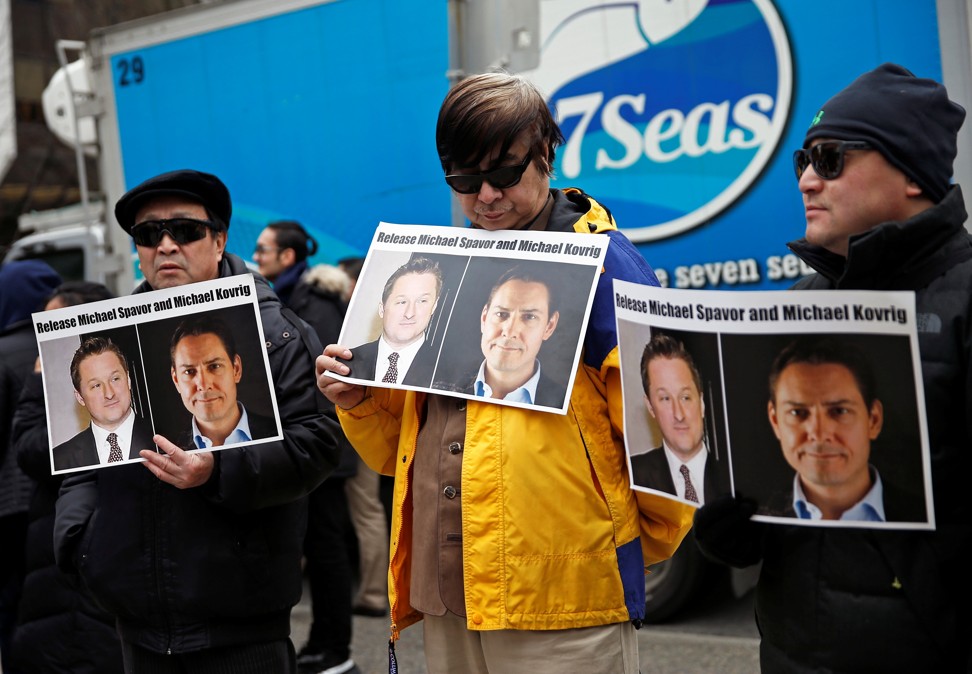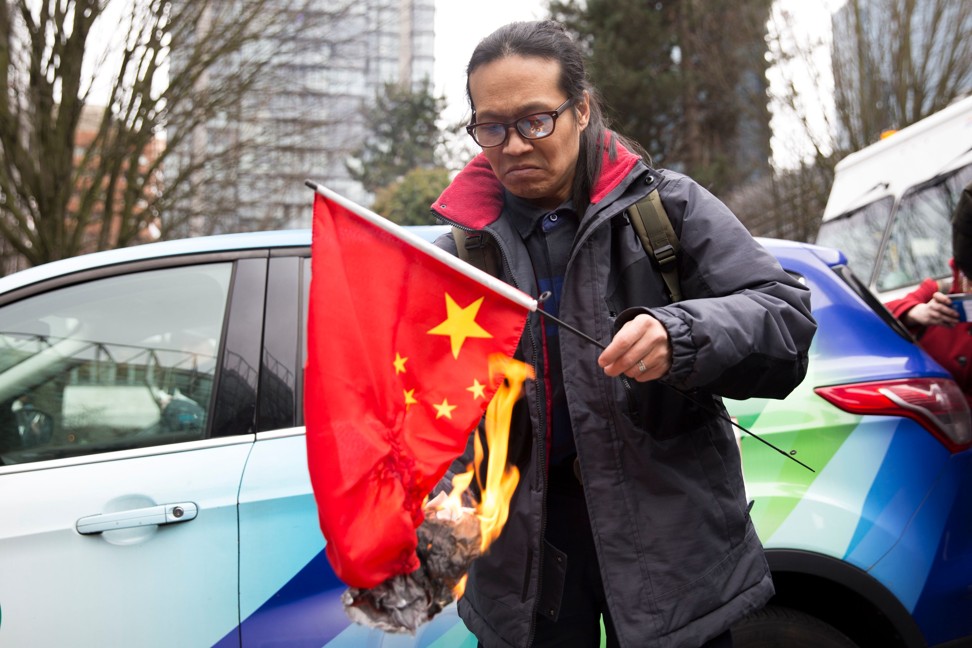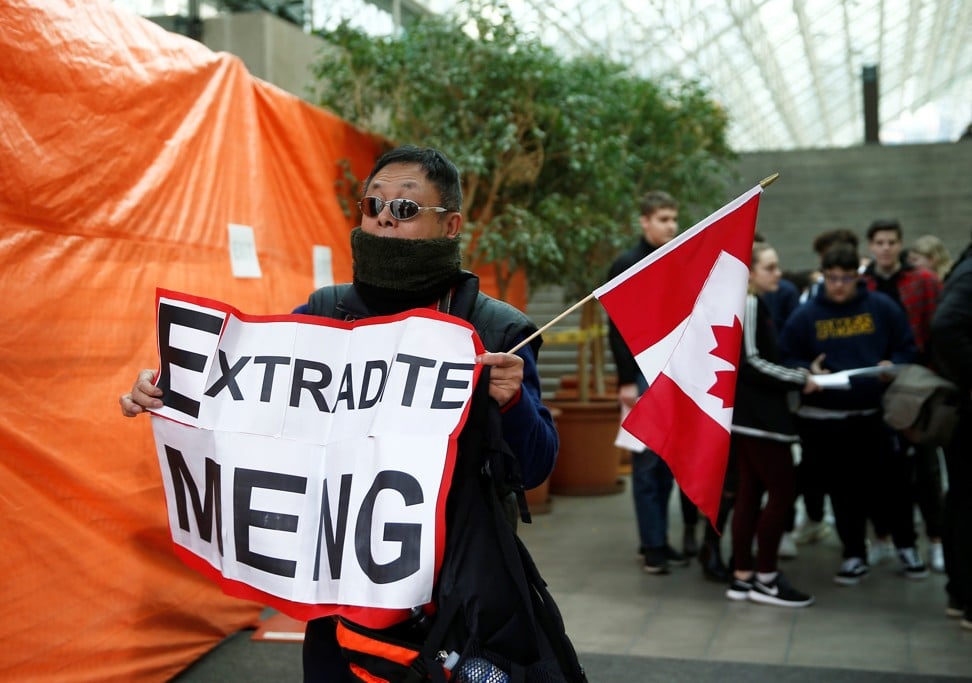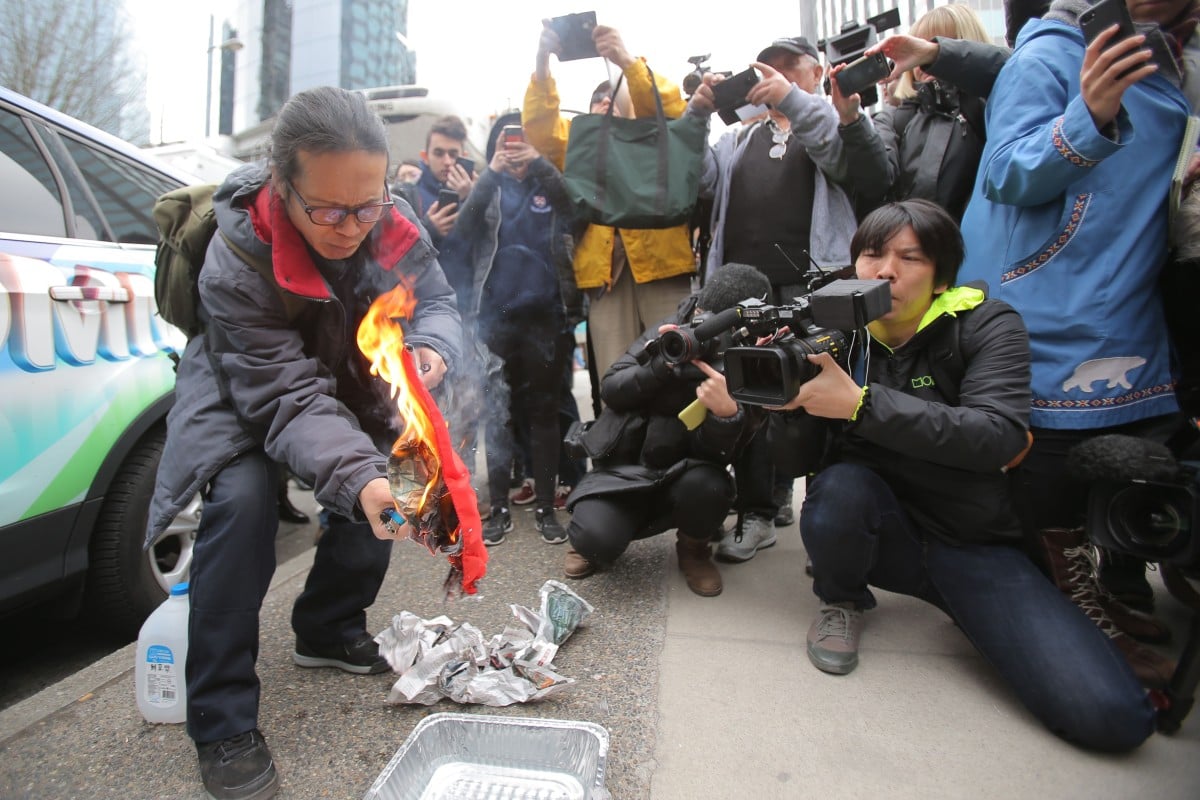Yang Kuang burned a Chinese flag outside Huawei CFO Meng Wanzhou’s court hearing in Vancouver – here’s why
- Protesters at Meng Wanzhou’s latest Vancouver court appearance called for the release of Canadians Michael Spavor and Michael Kovrig, who are held by China
- The demonstrators included Yang Kuang, well known in Hong Kong for his activism, and now living as a refugee in Canada
He’d been wanting to do it for a long time.
So, outside the British Columbia Supreme Court complex in Vancouver, where Huawei Technologies CFO Meng Wanzhou was facing a judge as part of her extradition process, Yang Kuang pulled out a Chinese flag on the broken tip of a fishing rod and set it on fire.

People hold placards calling for China to release Canadian detainees Michael Spavor and Michael Kovrig outside the British Columbia Supreme Court in Vancouver on Wednesday. Photo: Reuters
A phalanx of photographers and film crews captured the moment on a chilly Wednesday morning.
A string of Meng’s court appearances since her December 1 arrest at Vancouver’s international airport (at the US’ request) have attracted crowds of protesters and rubberneckers.
At her December bail hearings, the demonstrators were almost all pro-Meng and pro-Huawei, decrying her detention as a political pursuit by the US, aided and abetted by Canadian lackeys. “Free Meng”, and “We love you Huawei”, had read the placards waved by a mostly Mandarin-speaking crowd, some waving Chinese flags.
The protests mirrored Beijing’s unabated fury at Meng’s arrest to face US criminal charges of bank fraud, conspiracy and obstruction related to alleged breaches of US sanctions on Iran.
Lots of laughs

Huawei’s Meng Wanzhou shares a laugh with her driver as she leaves her home for the start of her extradition hearing. Photo: EPA
But on Wednesday a different scene was unfolding.
There were some pro-Meng protesters attending, but others were waving posters of Michael Spavor and Michael Kovrig, the two Canadians who have been detained by China and accused of working together to steal state secrets.
“Boycott Huawei” read one banner. “Extradite Meng”, and “Release Michael Spavor and Michael Kovrig”, read others.
The spoken language of choice was Cantonese (although a handful of white protesters were on hand too). The flags of choice were Canadian.
Except Yang’s, of course.
A well-known activist in Hong Kong, Yang was jailed for eight months in Shenzhen in 2014 for illegally crossing into mainland China, a sentence his family said was politically motivated.
Yang had previously made headlines in 2012 by captaining a boat that landed a party of activists on the disputed Diaoyu Islands, which Japan calls the Senkaku Islands. Then in 2013, Yang was arrested in Beijing for “provoking quarrels” while trying to visit the wife of jailed Nobel peace laureate Liu Xiaobo; Yang was sent back to Hong Kong.

Yang Kuang burns a Chinese flag outside the court. Photo: AFPHe was accepted as a political refugee in Canada in 2015, and now lives in Surrey, outside Vancouver.
Yang said he was angered by the “unreasonable tactics” used by Beijing to deal with Meng’s arrest, namely, detaining Spavor and Kovrig.
“The Canadian government actually used a legal procedure to extradite her to the US,” Yang said, in Cantonese.
“But the Chinese arrested two Canadians using a hostage-taking tactic – ‘you arrest my people, I’ll arrest yours’. I feel that that is extremely unreasonable. So when I found out that there would be protesters here, I came along to protest with them.”

Max Wang, an immigrant from China, holds a placard calling for Canada to extradite Meng Wanzhou. Photo: Reuters
The combustion of the Chinese flag was hardly spontaneous: Yang came with due diligence, keeping the flames at a safe distance, a foil roasting pan to catch the ashes and a jug of water, in case things got out of hand.
“I have wished to do that for a very long time,” he said. “So burning the flag was to fulfil that wish and to tell people that I am very displeased with everything that the Chinese government has done and to protest against its crackdown on human rights.”
After Yang’s incendiary moment, the protester loaded up his equipment in a backpack and walked down Nelson Street, a gaggle of curious teenagers in school uniforms trailing behind him.


No comments:
Post a Comment
Comments always welcome!